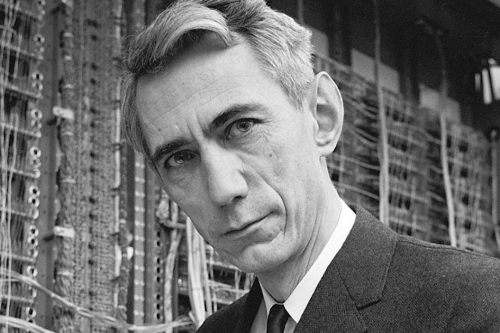

These days in baseball, every batter is trying to find an angle
With increasingly sophisticated data available, major league hitters are focusing on getting the ball in the air.
One day several years ago, as Chase Headley was still trying to establish himself as the San Diego Padres’ everyday third baseman, Padres management passed around a sheet of paper full of facts and figures on how its spacious ballpark, Petco Park, played for hitters. Flyballs were mostly swallowed up in the vast expanses of outfield, while groundballs and line drives played better than in the average stadium. The conclusion, as Headley recalls it, was clear: Padres hitters should keep the ball out of the air.
“I had more loft in my swing when I came up,” Headley said recently, “so I was trying to undo some of that, and I was trying to hit the ball down. It was a conscious thing: They wanted us to hit the ball hard but down.”
A few thousand big league at-bats later, Headley, now 33 and the starting third baseman for the New York Yankees, chuckles at how antiquated that sounds now — as the gospel of flyballs and high launch angles spreads across the game — and can’t help but kick himself for not resisting the Padres’ efforts to turn him into a groundball machine.
“I look back, and I’m like, ‘What was I thinking?’?” he said. “I’ve had to try to get it back the other way now.”
In that period between the Padres’ hit-it-low memo and the first part of the 2017 season has been a shift in philosophy so dramatic it can safely be called a revolution, with more hitters, armed with better and more extensive data than ever, reaching the conclusion that not only are flyballs, on average, better than grounders but that the latter are to be avoided at all costs.
“No grounders,” Toronto Blue Jays third baseman Josh Donaldson, the 2015 American League MVP and one of the movement’s most vocal proponents, said earlier this year. “Groundballs are outs. If you see me hit a groundball, even if it’s a hit, I can tell you: It was an accident.”
Another proponent, Los Angeles Dodgers third baseman Justin Turner, put it another way: “You can’t slug by hitting balls on the ground. You have to get the ball in the air if you want to slug, and guys who slug stick around, and guys who don’t, don’t.”
There is a simple and airtight logic behind the claim: Slugging, for the most part, happens in the air. In 2016, for example, big league hitters batted .239 with a .258 slugging percentage on groundballs vs. .241 and .715, respectively, on flyballs — with much of the difference, obviously, attributable to home runs: Grounders produced zero, while flyballs produced 5,422.
“If you look at a baseball field and look on the infield, there’s a lot of players there,” Donaldson said, providing an even more elemental logic. “There’s not as much grass. But you look in the outfield, there’s fewer players and more grass. So if you hit it in the air, even if it’s not that hard, you have a chance. There are some outfielders who make it more difficult. But someone who has never seen baseball before would be like, ‘Oh, yeah. You’d probably want to hit it out there.’”
« A transition lane »
The introduction in 2015 of Statcast — MLB’s camera-based analytics system, which can measure player movements and ball flights in intricate detail — has confirmed and perhaps accelerated the flyball trend in baseball by introducing “launch angle,” a measurement of a ball’s vertical trajectory, into the mainstream. While a launch angle of zero is essentially a line drive at the pitcher’s knees, a negative figure is a grounder and 90 degrees is a popup straight above home plate.Analysts have been able to pinpoint the range of 25-35 degrees as the sweet spot for home runs, when paired with an exit velocity — a measure of the speed of the ball off the bat — of 95 mph or greater. The exit velocity is crucial: At lower velocities, those flyballs are simply outs.
“People see launch angle and think guys are just trying to hit it higher,” Orioles slugger Mark Trumbo said. “That is a part of it. But you also have to hit it hard.”
And while data is available for just the past three seasons, there is already evidence that players are catching on. In 2015 the average launch angle in MLB was 10.5 degrees, but in 2016 the league-wide average rose to 11.5, an increase of about 10 percent. This year, through May 21, the league average is up to 12.8 degrees, another year-to-year increase of almost 12 percent. Clearly, the notion is gaining traction.
“It’s a transition lane in which the game is going,” Pirates Manager Clint Hurdle said this spring. “You’ve seen some very good hitters have very good success with it. More conversations are being had about it. We’re definitely having conversations.”
The increasing prevalence and success of flyball-focused hitters is a massively important development in the modern game because it can help explain — or at least illuminate — many of the major trends and issues confronting the sport.
• The increase in frequency and efficiency of defensive shifts. According to FanGraphs, teams are shifting at a rate nearly 10 times greater than six years ago (2,974 total at-bats against shifts in 2011 vs. 33,343 in 2016). Many hitters cite this as a primary reason they have chosen to take to the air. “Teams have more information about where to play their infielders,” Headley said. “But the one ball that can’t be caught is the one that lands in the seats.” Some baseball executives say the next logical step to combat the flyball revolution will be occasional four-man outfields.
• The overall increase in home runs. Hitters bashed 5,610 home runs in 2016, an increase of more than 14 percent from the year before and the most since 2000. That year turned out to be during the height of widespread performance-enhancing drug use in baseball. Maybe this new era of home-run hitting can be explained, at least partly, by more hitters simply concentrating on elevating the ball with power.
• Even the issue of pace of game is tied into the flyball revolution. It’s no secret games are longer and more bloated by inaction — one of Commissioner Rob Manfred’s pet causes — in part because hitters swinging for the fences are willing to trade strikeouts for home runs and thus are willing to go deeper into counts. Meanwhile, pitchers are taking longer between pitches, which some in the game attribute to the fact mistake pitches are being turned into home runs at a higher clip than ever.
“You can see pitchers taking more time to gather themselves before every pitch,” Nationals catcher Matt Wieters said. “There used to be a couple of hitters in each lineup where you needed to do that. Now it’s everybody.”
It’s not as if anybody has suddenly cracked a secret code about the optimum swing plane. Hall of Famer Ted Williams — in his seminal book, “The Science of Hitting,” published in 1971 when he was managing the Washington Senators — advocated swinging with a slight uppercut, a notion that went against the prevailing wisdom of the day.
“The ‘level swing’ has always been advocated,” Williams wrote. “I used to believe it, and I used to say the same thing. But the ideal swing is not level, and it’s not down.” Grounders, Williams acknowledged, put a “greater burden on the fielders.” But he added, “If you get the ball into the air with power, you have the gift to produce the most important hit in baseball — the home run.”
What is most important, Williams concluded, is that you hit consistently with authority. But Williams’s measured theory is a long way from the more radical approach of today, with some hitters swearing off grounders altogether.
Where did the modern gospel of the flyball originate? The Oakland A’s of the early 2010s are credited with identifying and exploiting a market inefficiency of undervalued flyball hitters, hoarding relatively cheap players with extreme flyball rates — such as Jonny Gomes, Josh Reddick and Jed Lowrie — and leading the majors in both 2012 and 2013 in flyball-groundball ratio, while winning the American League West both years.
But in terms of hitters purposely revamping their swings to become extreme flyball hitters, this modern trend is often traced to Marlon Byrd, the outfielder serving a 162-game suspension after a second positive test for performance-enhancing drugs. In 2012, Byrd averaged two grounders for every flyball, a rate that was in line with his career numbers to that point. But in 2013, after working with an obscure, independent swing instructor named Doug Latta who runs a baseball training facility in Chatsworth, Calif., Byrd cut that rate in half and produced the best season of his career.“Our first session was a tipping point for his career,” Latta said. “Basically, the whole idea of an uppercut was antithetical to what he’d been taught for his first 10 years in the majors. But right away, his first couple of swings, which he took using a little bit different movement, changed him, right there. And he was in. I could see the expression on his face. He told me, ‘Doug, I could never tell another hitting coach or player that I’m trying to hit under the ball.’?”
But in 2013, while with the New York Mets, Byrd convinced another struggling hitter, teammate Turner, to work with Latta. Before that, Turner was a fringe big leaguer with a lifetime slash line (batting average/on-base percentage/slugging percentage) of .260/.323/.361. Since joining the flyball revolution, he has hit .299/.367/.492 and was rewarded this offseason with a four-year, $64 million contract.
“He started drilling it into me,” Turner said of Byrd’s influence. “I started hitting with [Latta] in the [following] offseason, and then I just started running with it. .?.?. There’s no switch to turn on. There’s no trick. It’s just a lot of hard work, trying to get a better launch angle.”Secret to success
Look around the majors now, at players who make significant year-over-year leaps in performance, and there is a good chance at least part of the improvement is a result of hitting the ball in the air with more frequency and authority.
In fact, all you have to do is look at the Washington Nationals.In 2015, Daniel Murphy, in his final season with the Mets, had a groundball rate of 42.8 percent (of balls in play) and a flyball rate of 36.0 percent, and he batted .281/.322/.449 with 14 homers and 56 RBI. The next year, his first in Washington, he essentially flip-flopped his groundball-flyball ratio — to 36.3 and 41.9, respectively — and batted .347/.390/.595 with 25 homers and 104 RBI, while finishing runner-up in MVP voting. The change he made is illuminated by his average launch angle — 11.1 degrees in 2015, 16.6 degrees in 2016.
“It’s cool,” Murphy said this spring, “because with all the data we’ve been given now, [we have] some of the answers to the test.”Teammate Anthony Rendon had a similar reinvention (from 45.3 percent grounders and 33.3 flyballs in 2015 to 35.7 and 43.8 in 2016) and had a similar boost in production, gaining 91 points of on-base-plus-slugging percentage. Not surprisingly, his launch angle went from 10.6 degrees in 2015 to 16.8 in 2016.
This year, it is Ryan Zimmerman who — at Murphy’s prodding — has converted to the gospel of the flyball, going from an extreme groundball hitter (48.6 percent vs. 34.6 percent flyballs) in 2016, when he suffered through the worst year of his career at the plate, to a balanced 38.1/38.1 in 2017. Perhaps not surprisingly, he is off to a sizzling start, hitting .368 /.409/.709 , with 15 homers in his first 50 games. His launch angle has gone from 7.8 degrees in 2016 to 11.2 this season, through May 25.
At least publicly, though, Zimmerman remains skeptical of advanced analytics such as launch angle, sounding more like Williams than Donaldson.“For me, if I start to try to control those things, I start trying to do too much and think too much,” Zimmerman said. “It’s always been tough enough to just hit the ball hard. If you can do that, good things happen.”
Zimmerman scoffed at the notion that improvement is as easy as hitting the bottom half of the ball. “Good luck trying to hit the bottom of the ball when everyone’s throwing 95 or 100” mph, he said. “I think it’s more of a mind-set.”
But there is a growing bank of evidence that the approach is catching on and that it works. Eight of the 10 playoff teams in 2016 ranked in the top half of the majors in flyball percentage. The gospel has spread so far, even the Padres have embraced it — though in fairness, they have turned over their front office and moved in the fences at Petco Park since the days of the keep-it-on-ground memo.
“I’m doing a lot to not hit groundballs this year,” Padres first baseman Wil Myers told the San Diego Union-Tribune this spring. “When I [hit] off the tee, I do not hit anything that does not hit the top of the [batting] cage. Stay away from the groundball.”
Even the most ardent flyball evangelists acknowledge the approach has its limitations and caveats. It isn’t for every hitter. There may also be another reaction coming, in the form of hard-throwing sinkerball pitchers, who can better counteract hitters trying to drive the ball in the air. For now, at least, teams are finding it easier to acquire flyball hitters than to convert them during the season; most players only make major swing changes in the offseason.
“It’s difficult to tell a guy to change something based on a launch angle. It’s more about getting them to understand the best swing path for them individually,” Orioles hitting coach Scott Coolbaugh said. “You never want to impose a higher launch angle on someone who’s not a power guy. A smaller guy, a speed guy, someone who’s not a power hitter — you could be asking a guy to be doing something that works against them.”
But it seems likely the gospel of the flyball will continue to grow as more struggling hitters resurrect their careers and more good hitters become great by embracing launch angles.“It’s a career-changer,” Latta said. “The genie’s out of the bottle. Now, at the big league level, the key will be: ‘Do we really know how to instruct this?’ It’s not going away.”
If Williams was the oracle for older generations of hitters, perhaps Donaldson will be the same for this and future ones — a role he would relish. During an illuminating segment on his swing theory on MLB Network last year, Donaldson stopped at a crucial juncture and looked straight into the camera to address any kids who might have been watching.
“If you’re 10 years old and your coach says to get on top of the ball,” Donaldson said, “tell them no. Because in the big leagues these things that they call groundballs are outs. They don’t pay you for groundballs. They pay you for doubles. They pay you for homers.”


























Aucun commentaire
Vous devez être connecté pour laisser un commentaire. Connectez-vous.